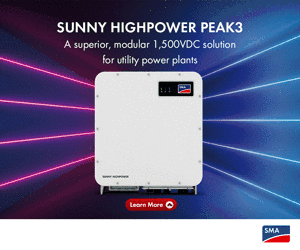Perovskite single crystals have generated interest in recent years for solar cell applications, owing to their optoelectronic properties such as long carrier diffusion length, high carrier mobility, and low trap density. The crystals are known for being free from grain boundaries and demonstrating low defect densities which, according to many scientists, make them comparable to those of the best-performing quality silicon. However, the benefits of switching from multi to single crystal growth in silicon are well known. For perovskites this has thus far proved challenging.
Researchers at the University of Nebraska in the United States have manufactured a perovskite solar cell with single crystals comprised of methylammonium lead triiodide (MAPbI3) via a novel approach, which they describe as a diffusion-facilitated space-confined method. “Current studies of the intrinsic properties of the perovskites are mainly based on thick bulk single crystals with thickness of millimeter which are too thick for application in solar cells,” they said. “Growing thin perovskite single crystals with large area represents an effective approach to overcome this obstacle, however there is no effective method handling the micrometer-thick iodide-based perovskite single crystals with large area.”
The U.S. group grew the crystals directly onto indium tin oxide (ITO) substrates covered with hole transport layer (HTL). These substrates have a controlled thickness of tens of micrometers and area of tens of mm2.The cell was then built with single crystals with a thickness of 10 μm that showed an efficiency of 16.1%, a short-circuit current of 20.5 mA cm−2, an open circuit voltage of 1.06 V, and a fill factor of 74.1%.
The academics decided then to treat the surface of the single crystals by spin coating the methylammonium iodide (MAI) solution to reduce the surface charge trap density, which raised the cell efficiency to 17.8%, the short-circuit current to 21.0 mA cm−2, the open-circuit voltage to 1.08 V, and the fill factor to 78.6%.
“We demonstrated the use of a single crystal to broaden the photoresponse range of the perovskite solar cells without losing device photovoltage and fill factor,” the scientists said. “More efforts are needed to enhance the carrier diffusion length and passivate the surface nonradiative recombination center density in order to boost the device efficiency to Shockley–Queisser limit.”






